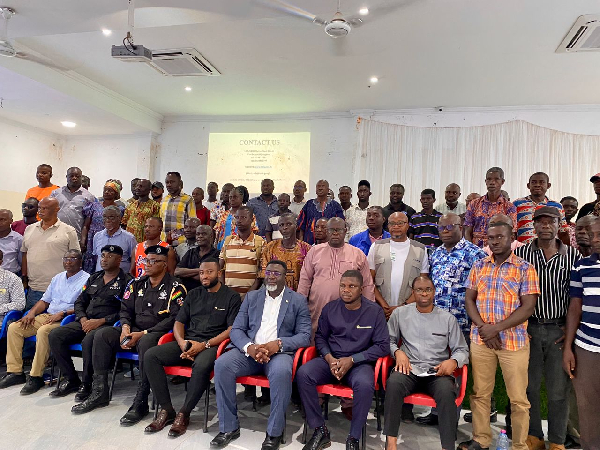Revamp ailing factories in Central Region to boost 24-hour economy-Chamber of Commerce to Government
By Isaac Arkoh
Cape Coast, May 22, GNA – The Chamber of Commerce and Industry has urged the government to urgently attract private investment to revive some ailing companies in the Central Region while exploring the Region’s huge idle minerals deposits for accelerated development.
These factories include the region’s oldest private factory, Ameen Sangari Industry Limited in Cape Coast, Komenda Sugar factory in the Komenda-Edina-Eguafo-Abrem Municipality and Saltpond ceramics in the Mfantseman Municipality.
Others are the Pozzolana cement factory at Gomoa-Mprumaim, near Winneba in the Gomoa West District, Bamboo factory in Assin Fosu in the Fosu Municipality, BRM Wood Processing factory at Nyankumasi Ahenkro in the Assin South District among others.
Several others into manufacturing, mining, education, ecotourism, hotel and hospitality industry, agro processing, fishing, transport and general trade and commerce are battling to survive varying complicated challenges.
Madam Benedicta Anita Mensah, Manageress of the Regional Chamber, in an interview with the Ghana News Agency, said some companies across the region faced significant challenges that hindered their growth.
That included poor infrastructure, particularly bad road network, market access and capital.
She said small and medium enterprises struggled with limited financing, high borrowing costs and lack of knowledge on markets, affecting their competitiveness.
Businesses suffered regulatory and bureaucratic obstacles and complicated business operations, while unreliable electricity and poor utilities increased costs and reduced productivity.
Others are legal issues and intense competition from larger firms, and imported products often threatened local businesses’ market share, posing major obstacles to business development and sustainability.
Madam Mensah also reiterated the need for government to leverage the rich mineral resources of the region to spur growth and development under the proposed 24-hour economy.
The minerals include gold, beryl, bauxite, kaolin, lithium, tantalum and clay minerals like kaolinite, quartz and mica.
Further highlighting its diverse mineral wealth, she mentioned minerals like beryl, bauxite and potentially iron ore, nickel, copper, manganese, silver, zinc, limestone and phosphates found in the region.
She was excited about the lithium discovery in commercial quantities in some communities in Abura-Asebu-Kwamankese, Mfantseman, Ekumfi, Ajumako and Gomoa West and urged government to speed up the ratification processes.
She said kaolin was found in excess in Abandze in the Mfantseman Municipality to support local ceramics manufacturing.
According to her, Saltpond community, near Mankessim was notable for its petroleum and natural gas deposits, saying “exploring petroleum and natural gas at Saltpond was crucial for Ghana and the local community.
“It can generate significant economic benefits, including revenue for national development, job creation and local business opportunities, and support energy supply and industrial growth, fuelling broader economic expansion.
Madam Mensah expressed deep regret, particularly over the limited operations of the Pozzolana cement factory at Gomoa Mprumaim in the Gomoa West District.
She said the Pozzolana cement produced from locally sourced primary materials like clay and palm kernel shells, is manufactured by the Building and Road Research Institute (BRRI) of the Council for Scientific and Industrial Research (CSIR).
It had been largely inactive due to insufficient funding.
The factory offering a cost-effective and eco-friendly alternative to traditional Portland cement when well resourced, would help address Ghana’s housing deficit by providing affordable building materials and creating local jobs, thereby sustaining the country’s construction industry.
It would also provide significant lower construction costs, reduce carbon emissions and support climate-friendly building practices.
Officials had estimated that more than $4 million was required in addition to the nearly one million Ghana cedis already invested from internal funds, to restore production capacity to meet current demands.
Largely, the intervention would give a strong boost to the country’s broader industrialisation goals, focus on enhancing manufacturing capabilities, reduce import dependence and promote sustainable growth.
GNA
Edited by Alice Tettey/Christian Akorlie









